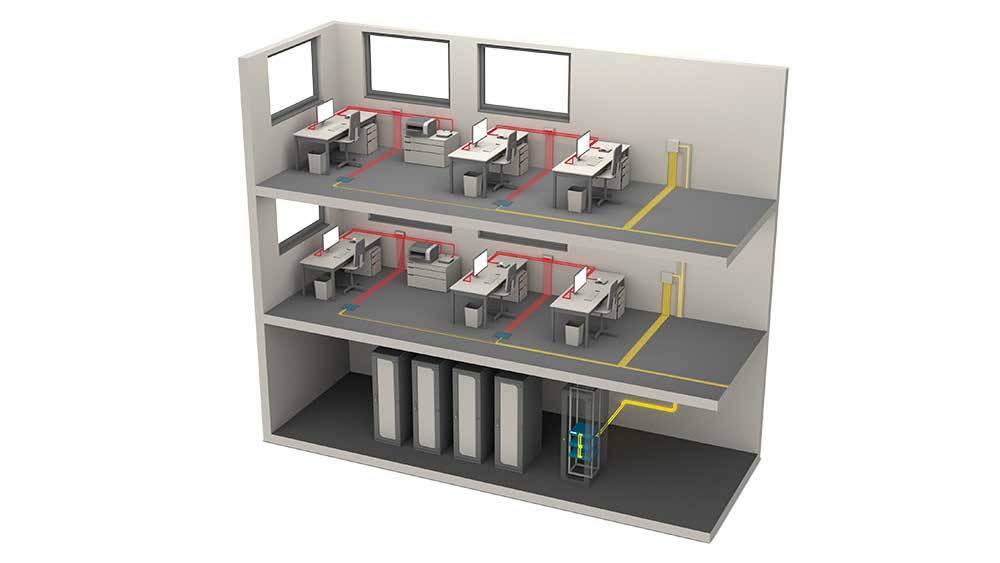STRUCTURED CABLING
Multiple single point-to-point connections Vs Structured Cabling
Messy and unorganized cabling infrastructure will lead to network issues and problems. This condition usually occurs when many single point-to-point connections are laid out. Maintaining multiple single point-to-point connections is also tedious, difficult and stressful. This stress can lead to network and channels errors in the hardware that are very difficult to trace. Multiple single point-to-point connections will also lead to cabling bulk that would impede airflow of the HVAC / CRAC unit which in turn will lead to cooling issues.
Therefore, Structured Cabling is a more sensible and logical way to do network cabling.
Structured Cabling put in action

Simply put, structured cabling is the standardized architecture of communication cabling connections specified by the EIA/TIA committee and is used as a voluntary standard by manufacturers to insure interoperability of equipments. In a structured cabling infrastructure, hardwares are not connected in a point-to-point method. Rather, connections are laid out as trunks with a series of patch panels at each end of the connections.
Advantages of Structured Cabling
- It provides greater ease of use, modifications and changes for a network infrastructure.
- It reduces complications in maintenance as cables are organized and easily identified.
- It reduces downtime
- It is aesthetically appealing as cables are run down in a structured manner.
